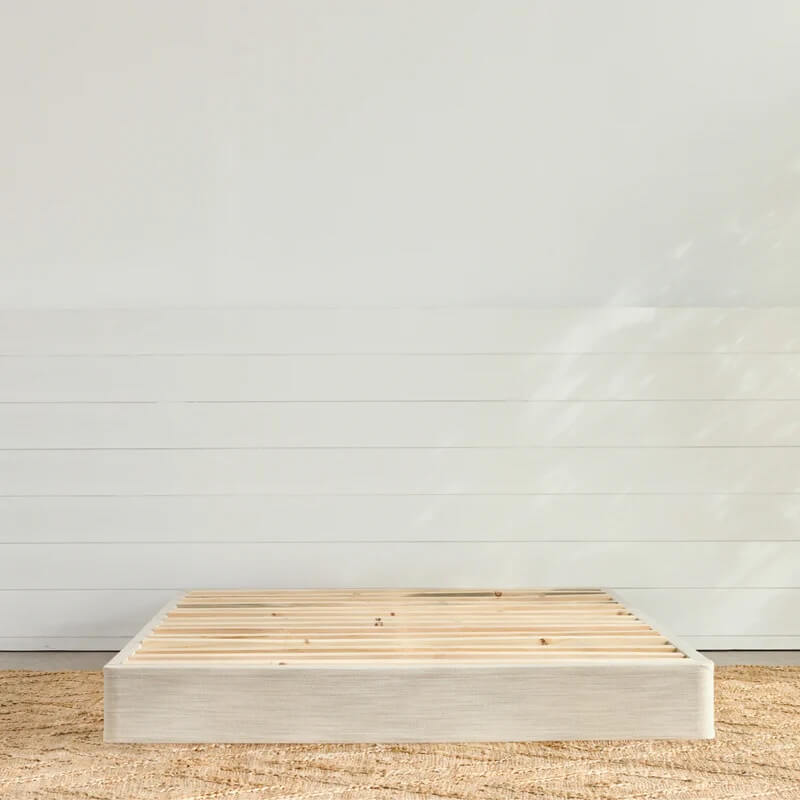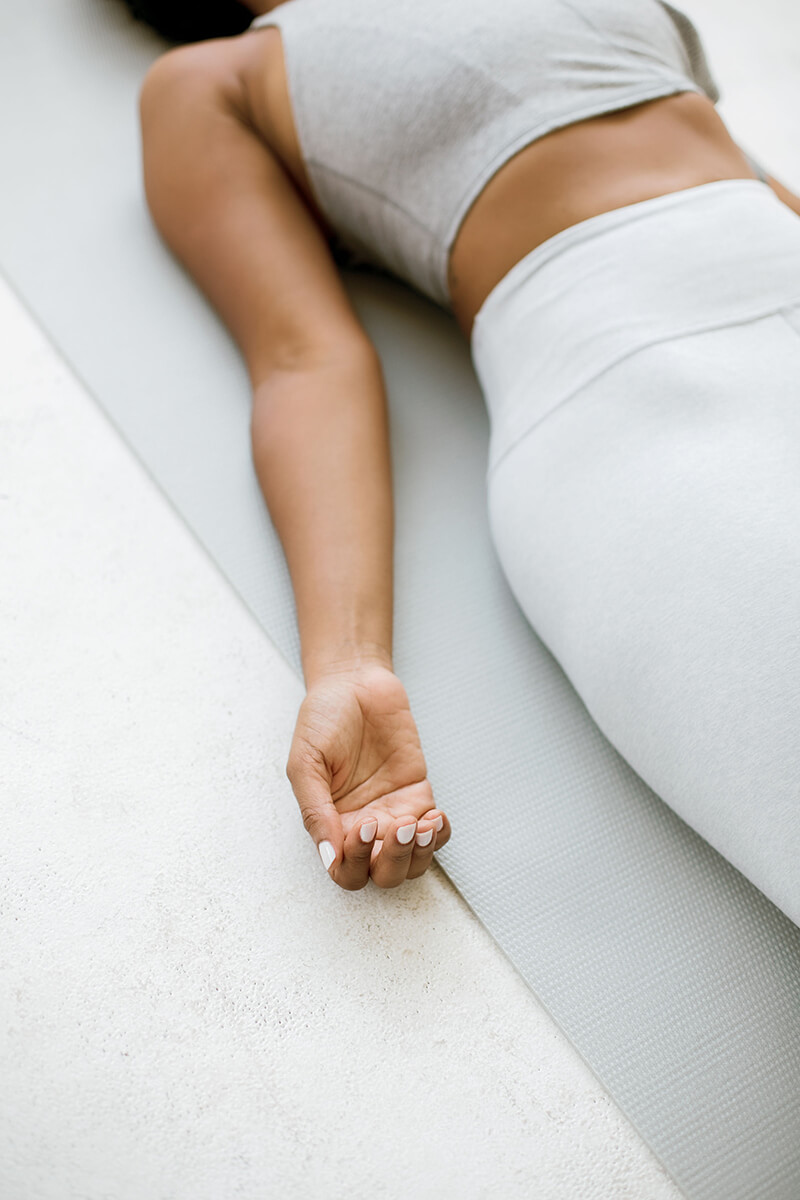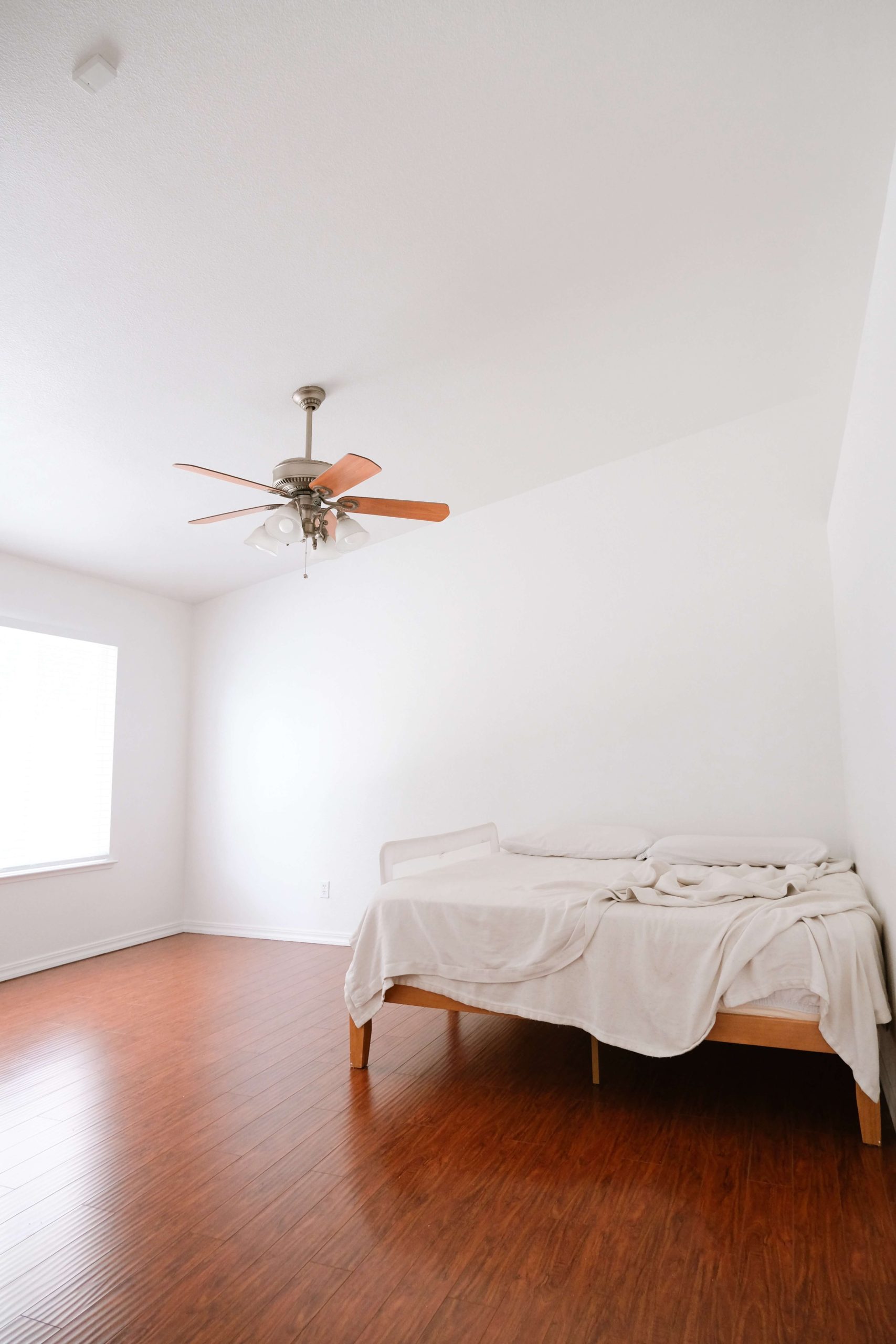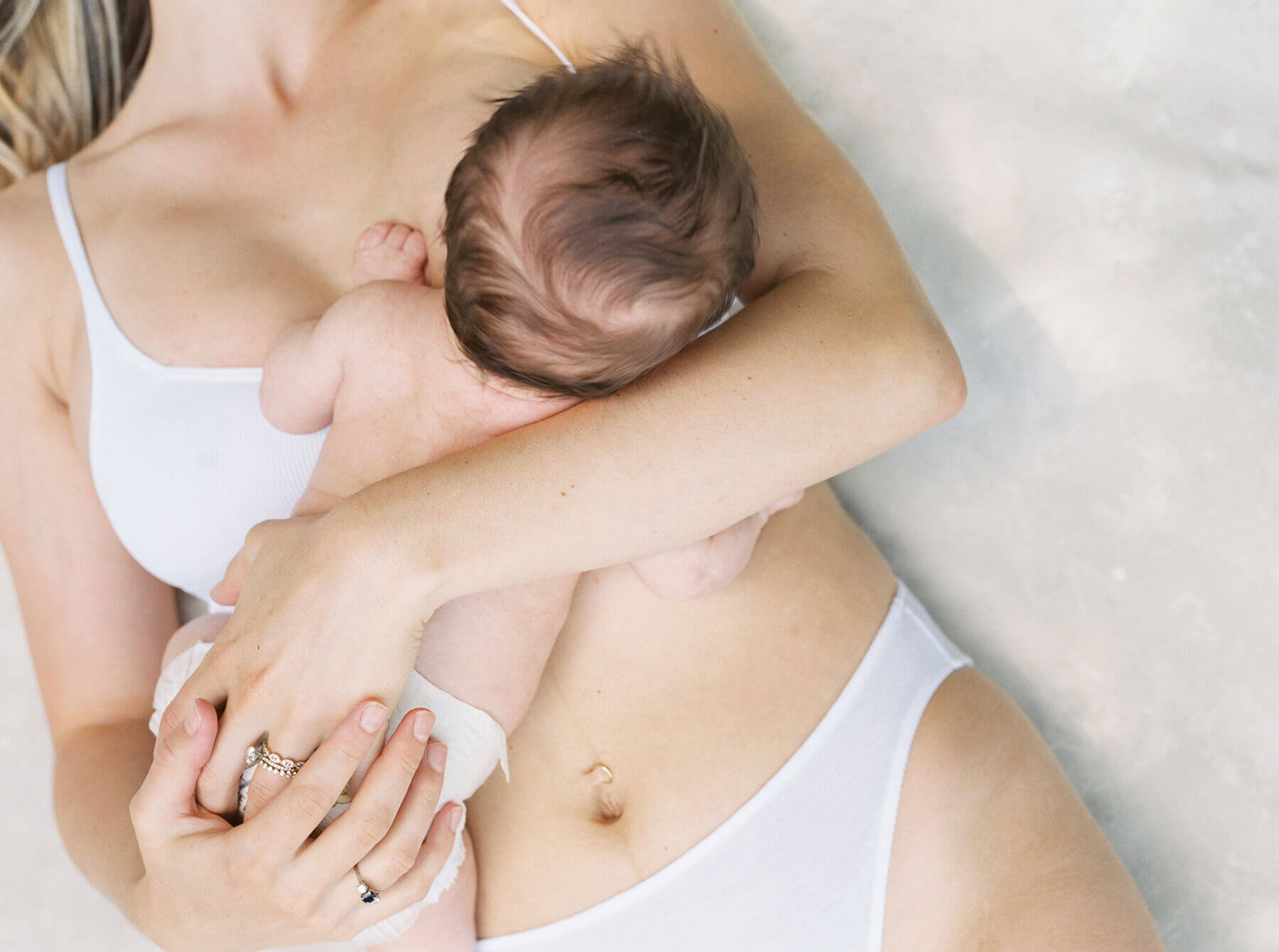Many cosleeping parents move their mattress down to the ground to prevent falls, but they don’t realize that mold can grow underneath. Mold can grow on the bottom of a floor bed if there isn’t any airflow underneath. So parents need to take proactive steps to prevent this.
Families who cosleep can prevent mold from growing underneath the floor bed by using a waterproof mattress cover to keep moisture from seeping into the mattress and by setting the mattress on something that allows air to flow underneath. If you want to put your mattress directly on the floor, you’ll need to prop up your mattress periodically to air it out and prevent floor bed mold.
It’s a great idea to move your mattress down to the floor when you’re bedsharing with a mobile baby or toddler. But you’ll need to make sure mold doesn’t grow underneath, or else you’ll be dealing with another big problem very soon.
Why Do Cosleeping Families Need to Worry About Mold?
Finding mold underneath your floor bed isn’t just a big inconvenience, it can be very dangerous to everybody in the family’s health.
Any kind of foam mattress, even the ideal latex mattress for bedsharing families, is a potential breeding-ground for mold. Why? Foam is full of tiny air pockets, which serve as the perfect home for millions and millions of mold spores.
This is terrible and expensive because if mold gets into your mattress, there is absolutely no way to clean it all out and continue sleeping on it. The mattress will have to be replaced.
And mold underneath or inside your mattress brings the risk of the mold becoming airborne. If you or anybody in the family inhales the spores, they could cause major health issues.
What Causes Mold to Grow on Mattresses?
Mold is everywhere! We’re exposed to mold indoors and outdoors, every day.
Pro tip: Establish a “No Shoes” policy in the family bedroom to help keep outside mold out.
Mold can enter your home through open doorways, windows, vents, and heating and air conditioning systems. Mold in the air outside can also attach itself to clothing, shoes, and pets, then be carried indoors. When mold spores drop on places where there is excessive moisture… they will grow.
Centers for Disease Control and Prevention
If the CDC thinks the average person should consider excessive moisture in their mattress, families who cosleep have a much bigger problem! Family beds hold more bodies, and those extra bodies bring the potential for more moisture.
Prevent Floor Bed Mold by Using a Waterproof Mattress Protector
Some family beds contain “excessive moisture” due to sweat, breastmilk or formula, spit-up, or diaper leaks. The possibilities feel endless to cosleeping families like ours, don’t they?
That’s why it’s critical to protect your mattress from moisture. You’ve got to take proactive steps so that it doesn’t accumulate and provide a breeding ground for mold.

We use Avocado’s organic waterproof mattress protector on all of our mattresses because it is incredibly soft. It feels like a fancy fitted sheet! You’d have no idea it’s a protector. (And an effective one at that!)
Before I found it, I tried a few other affordable options on Amazon. This one works well, in my experience, as well as this one.
What’s my main problem with the average waterproof protector you can find on Amazon? They are loud. Many of the affordable options are affordable because they’re made with plastic. And plastic makes a squeaky sound when you move on it throughout the night.
Both of the cheap plastic mattress protectors that I bought ended up getting melted in the dryer, even though I followed the instructions on the label. So I spent more money in the end than if I had just bought the organic, pricier model from the beginning.
You get what you pay for.
If you’d like to take a deep dive on this topic, make sure you read my blog post on how to prevent diaper leaks while you’re bedsharing!
Prevent Floor Bed Mold by Putting Something Underneath That Allows Airflow
It can feel stressful to add height to your bed, when you’re worried about your baby or toddler rolling off. But luckily, you’ve got tons of low-profile options that will enable air to flow underneath your mattress and not add too much height.
Prevent Floor Bed Mold with a Japanese Tatami Mat or Coconut Coir Mat
Traditional Japanese Tatami mats are made of compressed straw with a tarp backing. The straw allows air to move underneath your mattress. Not enough airflow under your mattress can cause moisture to build up, especially in humid locations. Tatami mats sit very low to the ground, so they won’t add much height if baby rolls off the mattress.
Luxury Tatami mats have a layer of coconut hair along with the compressed straw. Coconut hair is soft and allows air to move through it.

In fact, coconut coir mats are also a popular option for preventing floor bed mold. They are reminiscent of the common door mat that you wipe your shoes on as you enter a home. They’re natural, made from the long, brown fibers of the coconut husk. And they’re durable and long-lasting.
Some brands add organic latex with the coconut fibers to make it even stronger, like this mat that we use here in our family bedroom.
Use a Slatted Bunkie Board or Bed Slats to Prevent Floor Bed Mold
Bunkie boards function like a box spring but without the added height. They got their name from bunk beds because traditional box springs are too tall for bunk beds — they wouldn’t allow enough clearance for a child to sit up on the bottom bunk.
Bunkie boards are usually made out of plywood or particleboard and only 1-3 inches tall. This is great news for bedsharing families — they won’t add much height if your baby or toddler rolls off the floor bed.
But something important to note is that bunkie boards usually come as one, long piece. This means that they trap heat, increase moisture buildup, and prevent airflow.
So if you want to use one underneath your floor bed, make sure it’s a slatted bunkie board. This means that instead of one long piece, it’s made up of multiple wood slats covered with a breathable cotton canvas. This allows air to flow underneath the mattress and prevents heat and moisture.

A simpler solution is to place bed slats underneath your floor bed to prevent mold. You can go out and buy some, or maybe you can use the ones from the bed frame you’re no longer using!
Keep in mind that they may scrape your floor, if you don’t have carpet. Lay an area rug down beforehand to protect your floor from the slats.
Use a Low Foundation to Avoid Floor Bed Mold
If you aren’t too worried about adding height to your floor bed, consider putting your mattress on an ultra-low foundation like the beauty below. This will allow ample airflow underneath your mattress. And it’ll also help elevate your family bedroom — it’s pretty!

A lot of bedsharing parents don’t want to put their mattress on the floor. They feel like they’re back in college. Many feel embarrassed to invite people over! But an ultra-low foundation gives the illusion that this is all done on purpose. (Which, of course, it is!)
Prevent Floor Bed Mold by Propping Up Your Mattress and Airing it Out Periodically
If you still want to place your mattress directly on the floor, of course that’s up to you!
Many cosleeping families simply prop up their mattress against a wall for a few hours to prevent floor bed mold.
How often? Depends on where you live. If you live somewhere that is humid, you’ll want to prop up your air mattress at least once a week.
But if you don’t have much humidity where you live, you may decide to do it every few weeks or once a month.
No matter which interval you choose, make sure you set an alarm on your phone or in your calendar so you won’t forget to do it!






Thank you for this! We’ve had our mattress on the ground and never even considered mold 😬 Now we prop up our mattress thanks to you!